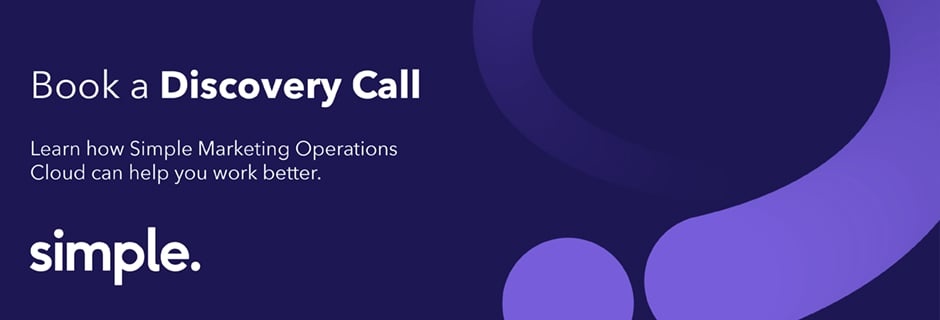How Marketing Operations (or MRM) Underpins Successful Digital Transformations in Marketing
These days you can’t turn around in business without being exposed to some form of digital transformation. It seems everyone is either actively planning, just emerging from, or deeply mired in a digital transformation. But how do you get your team working together quickly and successfully, to effect rapid change? And how does it apply to marketing?

According to the Digital Marketing Institute, a digital transformation in marketing refers to “the shift from digital complacency to the active pursuit of digital excellence through the proper usage and optimization of your digital channels. More specifically, this means refining your digital channels to gain deeper insights that inform your approach and improve the customer journey”.
Go a little deeper, and there are three major changes that take place during digital marketing transformations:
1. Marketing becomes a two-way conversation
The marketing department is no longer a show-and-tell function, it’s a relationship function. Customers are turning to social media to interact with companies. They expect two-way feedback, product communities, and a commitment to service — and they expect it instantly.
2. Data informs activity
Good marketers should not abandon their instincts, but marketing activity must be informed by the data that digital channels and tools and provide. Test-and-learn activity should be the norm, and continual learning and improvement the aim.
3. Goodbye Legwork, Hello Automation
Automation allows marketing departments to fill the gap where human effort simply can’t function. Take this a step further, and you’re in the realm of applying machine learning and artificial intelligence to help you respond more quickly to customers or analyse large amounts of customer data for maximum insight.
But simply pursuing ‘excellence’ is not enough to justify putting your organisation through all the planning, cost, implementation pain and retraining required for a digital transformation. The goal should actually be a reduction in expenditure and an increase in customer retention and spend through the proper use and optimisation of digital channels.
The operational layer
The size of the potential upside depends on the scale of the digital transformation, as well as the quality of your strategy, tool selection and implementation.
Your digital transformation strategy might include a website overhaul, increased personalisation on your website and in your communications, new social media management tools, a chatbot to increase responsiveness, an overhaul of your CRM or marketing automation system and new analytics tools.
But the success of your digital transformation will also depend on effective onboarding, training, adoption and proper use of your new digital toolkit by existing and new staff.
What that means is that for your digital transformation to succeed, it must be accompanied by an operational transformation in marketing. It’s not enough to buy the tools: they need to be integrated into one marketing system promoting collaboration, facilitating integration and adoption, and driving continual improvement.
Done well, the upside is clear, according to McKinsey, which says marketing operations can contribute a 15% to 25% per cent improvement in marketing effectiveness, as measured by return on investment and customer-engagement metrics.
According to transformation consultant Norma Abeyasekera, who has managed large-scale operational and marketing transformations at organisations including the University of New South Wales and not-for-profit St Vincent’s, successful organisational change requires the correct “systems, structures and processes”, underpinned by the right technology and governance.
For a holistic approach that covers your entire marketing process, that means implementing a marketing resource management system, or marketing operations software, to keep your transformation on track.
Here’s why MRM systems — which bring all members of a marketing team from those at the very top to those at the coalface, together in the pursuit of unified objectives — are so essential for effective digital transformations in marketing:
1. Dynamic marketing planning
When you create a marketing plan in an MRM system via a centralised calendar of activities linked to actual tasks, your plan no longer sits by itself becoming more out-of-date by the day but rather, it’s continually updated as activities and dates change.
The benefit: Your MRM platform becomes a single source of truth for your entire end-to-end marketing engine – including all your marketing activity, not just your digital marketing campaigns – and generates tasks that ensure marketing activity is executed as planned.
2. Visibility of marketing
Following customers through a collective of disparate data silos created by unconnected martech tools is not sustainable or scalable. It’s hard to get a complete picture of all the marketing activity you’re undertaking, let alone how well it worked, and how it might be improved. Your MRM platform should capture budget and resource management data and provide an accurate daily picture of everything that’s been done or planned.
The benefit: Your Marketing Resource Management Solution (MRM) should always show your organisation an up-to-date view of work in progress and recent results, decreasing reporting time, lowering cost and improving the tracking of projects through the system.
3. Process and workflow automation
Do you want your teams to add UTM codes to links for improved lead management and tracking? Perhaps you need to improve marketing compliance with regulatory requirements to reduce risk? Or maybe you’re looking to improve results tracking and reporting. Make it a step in your marketing process, captured in your MRM platform.
The benefit: Standardised operating procedures that ensure all the right steps are followed — and make it clear when they’re missed — promoting adoption, improving accuracy and lowering risk and the associated costs and penalties.
4. Increased speed and utilisation of content
Decrease the time it takes your team to get a campaign to market with templated processes, specified approval processes and timeframes, and standardised briefs. Store your assets in your MRM’s digital asset management system for easy use, and rapid editing and re-use.
The benefit: Increased responsiveness, reduced costs, improved capacity and the ability to identify, scale and double-down on successful activity – all of which drives marketing-led growth.
5. Agile process management
For some organisations, agile work methodologies will go hand-in-hand with digital transformations. Your MRM platform should include visual project management boards that promote agile processes, templates that enable successful campaigns to be repeated at scale, and analytics tools that enable you to measure and improve campaign performance without sending a request to your data team.
The benefit: Increased responsiveness and improved prioritisation of projects in line with the promise of agile methodologies such as Kanban, as well as the support of test-and-learn activity backed by data collated in your MRM platform.
6. Optimisation management
How well do your martech tools play together? If you can create one marketing ecosystem into which all your component parts feed, you can build out and optimise your marketing engine. Your MRM platform should integrate with your CRM, marketing automation and data analytics tools to facilitate lead tracking, improved personalisation and capture results.
The benefit: Continuous improvement and better results. Feed that data back into your next planning cycle and ensure your next marketing plan is streets ahead of the current one.
In short, a digital transformation without an operational transformation underpinned by the right technology and governance runs a greater risk of failing to effectively optimise your end-to-end marketing process, reduce costs and improve outcomes.

